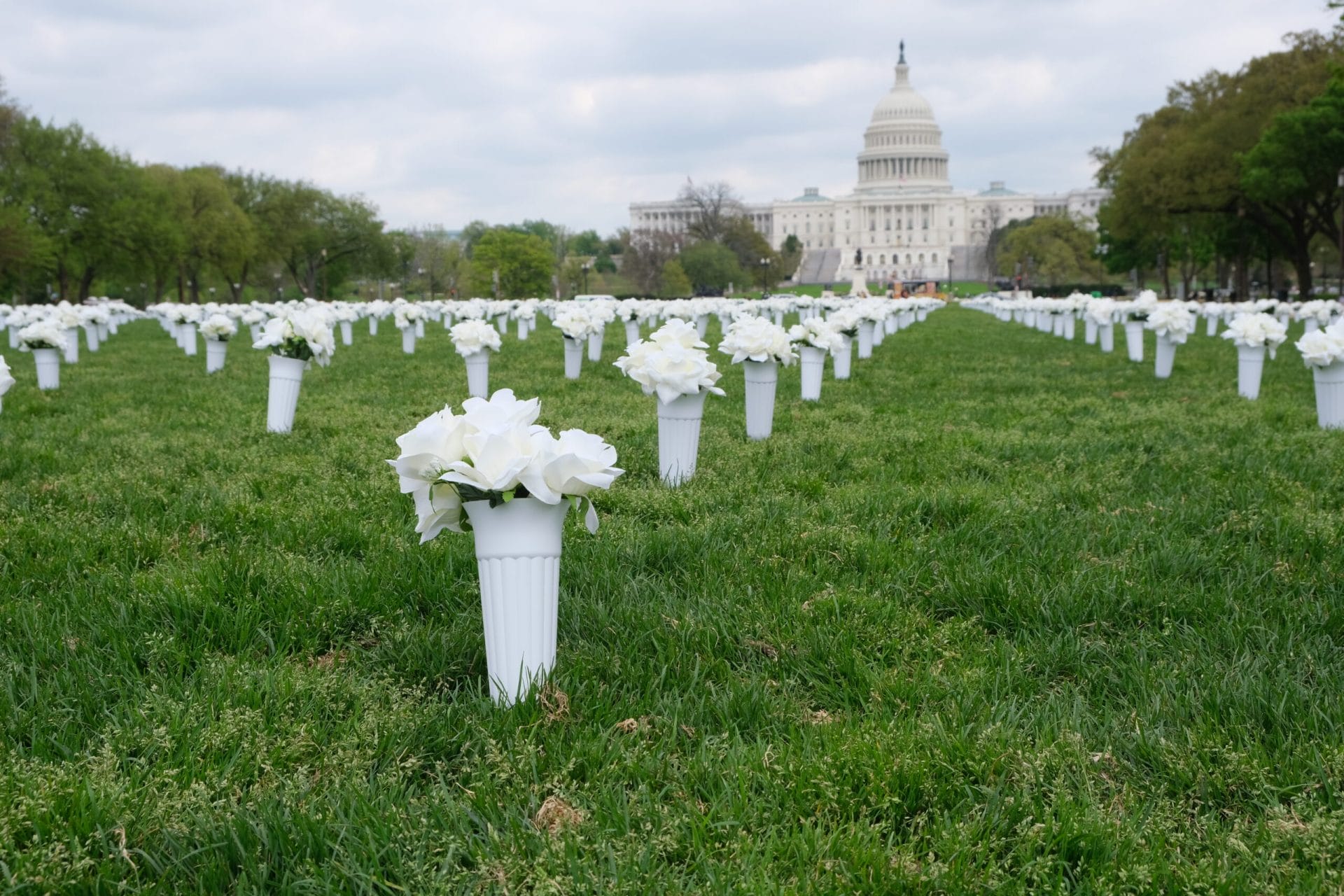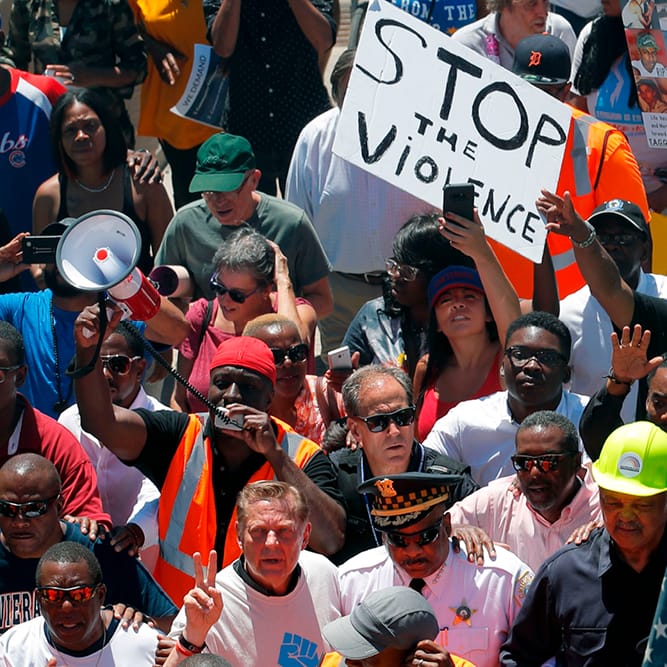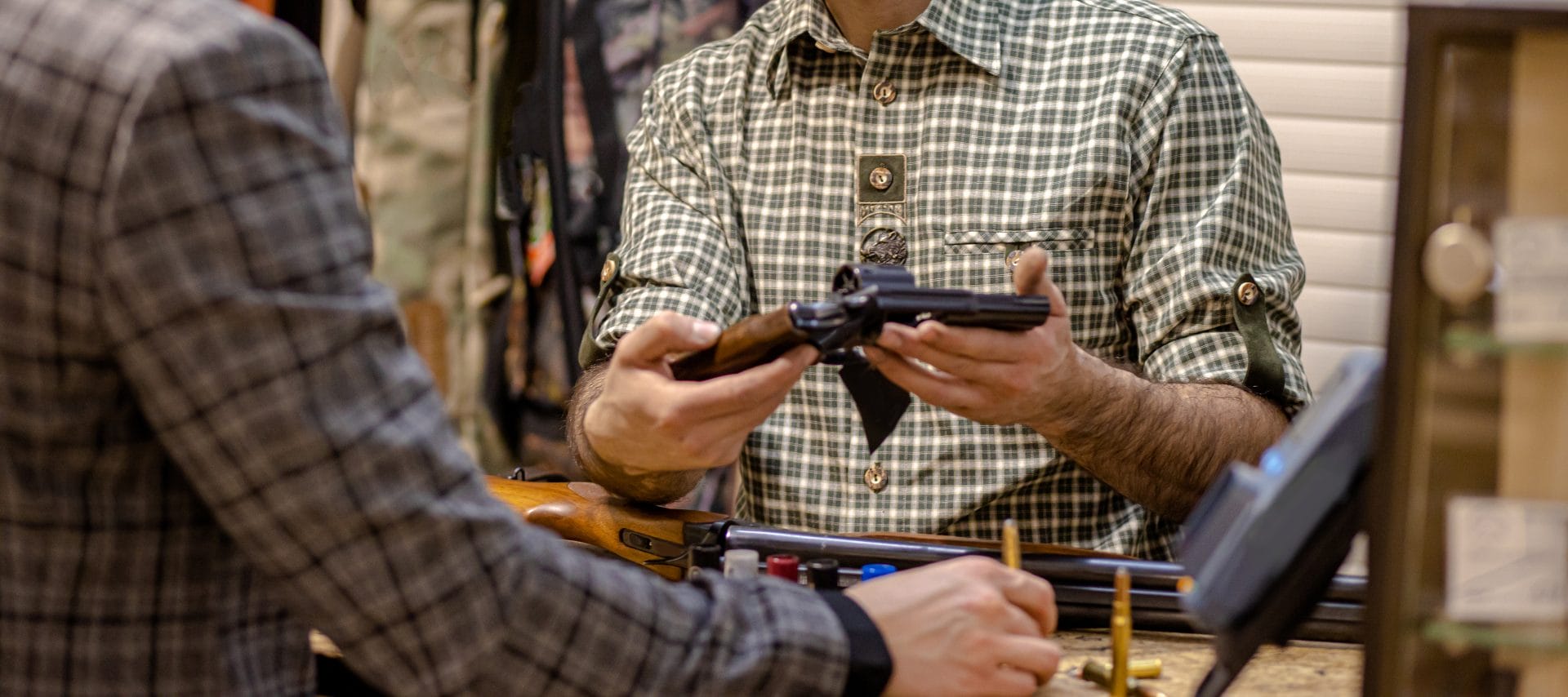
A Steadily Growing Epidemic: Gun Violence in 2021
In 2020, the US saw a level of gun violence not seen in decades, as gun deaths spiked amidst the COVID-19 pandemic.
However, a new release of final data from the Centers for Disease Control and Prevention (CDC) shows that 48,830 people were killed by guns in 2021—an eight percent increase over the already historically high level of gun deaths in 2020. More than 15,000 more Americans died from gun violence in 2021 compared to 2012, just one decade earlier.
While the surge in gun deaths in 2020 was primarily driven by an increase in gun homicides, this data suggests that increases in gun violence in 2021 were driven by increases in both gun homicides and gun suicides. Gun homicide and gun suicide rates each rose eight percent from 2020 to 2021. This increase in gun suicides represents the largest one-year increase in the firearm suicide rate on record. The increases in gun deaths were felt across geographic and demographic groups. In fact, all but five states saw an increased gun death rate in 2021 compared to 2020.
Nevertheless, 2021 was a particularly deadly year for some of the nation’s most marginalized and vulnerable populations. Every racial and ethnic group saw increases in gun deaths from 2020 to 2021, from six percent among white people to 20% among Native Hawaiian and other Pacific Islanders. However, these increases showed even more disparities when broken down by race and gender. The highest increases by race and gender were seen among Asian women (29%) and Black women (24%); white men and women saw the smallest increases in gun deaths (6% and 5%, respectively).
2021 was also an especially violent year for American children. As seen in 2020, gun violence continued to be the leading cause of death for children in the US—outpacing deaths from car crashes, cancer, and COVID-19. 2021 shows the highest number of child gun deaths in 25 years. One in every 14 children under age 18 that died in 2021 died from gun violence.
The data below outlines the increases in gun deaths by the type of violence, as well as how particular demographic groups were impacted.
MEDIA REQUESTS
Our experts can speak to the full spectrum of gun violence prevention issues. Have a question? Email us at media@giffords.org.
Contact
Gun Suicide
Gun suicide continues to be the leading cause of gun death in the US, accounting for 54% of all firearm fatalities in 2021. In total, 26,328 people lost their lives to gun suicide in 2021, representing the highest number of gun suicides on record.
The increase in gun deaths in 2021 was fueled in large part by an unprecedented rise in gun suicide deaths. In fact, 2021 saw the largest one-year increase in gun suicides on record, rising eight percent from 2020 to 2021. Alarmingly, this increase comes on the heels of more promising trends: gun suicide rates fell slightly in 2019 and remained roughly stable in 2020.
Guns remained the most common method used in lethal suicide attempts: 55% of all suicide deaths in 2021 were gun suicides. Importantly, 2021 data shows a growing disparity in trends in firearm and non-firearm suicides. While both firearm and non-firearm suicides increased in 2021, there were 2,036 additional firearm suicides in 2021 compared to 2020, and only 168 additional non-firearm suicides. These trends mirror patterns from prior years: in 2020, for example, there was a small decrease in non-firearm suicides, but a small increase in firearm suicide deaths.
All but seven states reported a higher gun suicide rate in 2021 than in 2020. While the average state saw an increase of about 10%, six states—Hawaii, Montana, Delaware, North Dakota, Maine, and Illinois—saw their gun suicide rates increase by more than 20%.
Historically, the majority of gun suicide deaths have involved white men. While this remains true, with 77% of all suicide deaths in 2021 occuring among white men, data from recent years suggests that firearm suicide rates among people of color are increasing more quickly than gun suicide rates among white people. In fact, while firearm suicide rates rose seven percent for non-Hispanic white people, such rates rose eight percent for American Indian and Alaska Native people, 10% for Asian Americans, 12% for Hispanic people, 21% for Black Americans, and 45% for Native Hawaiian and other Pacific Islanders.
Additionally, while women continued to comprise just 13% of gun suicide deaths, for many racial groups, gun suicide increases were larger among women than men. For example, while gun suicide rates rose 18% among Black men, Black women experienced a 49% increase.
Racial disparities in rising suicide rates are especially pronounced for young people: suicides rose nine percent for white youth ages 10 to 17, but 26% for Asian teens and 45% for Black teens. Overall, youth gun suicides rose 11% from 2020 to 2021.
Gun Homicide
In 2020, the US saw the largest one-year increase in gun homicides on record. Alarmingly, 2021 saw further increases on top of this spike, leading to 20,958 total gun homicide deaths that year. 2021 did not surpass the record high rates of gun homicides in the early 1990s, but did see the highest number of gun homicides in at least four decades—beating the record set in 2020.
Guns remained the leading means of homicide in the US in 2020. In fact, this new data suggests that firearms are increasingly fueling homicides: in 2012, guns were used in 70% of all homicides. In 2021, guns were used in 81% of all homicides.
While at least 46 states saw increases in gun homicide rates in 2020 compared to 2019, at least 13 states saw decreased gun homicide rates in 2021 compared to 2020. Importantly, these 13 states still had higher gun homicide rates in 2021 than in 2019. However, these data suggest that in some places, at least, the gun homicide spike may be waning, despite the fact that gun homicides rose nationally. In fact, while eight states saw a more than 50% increase in gun homicides from 2019 to 2020, only one state—New Mexico—saw a gun death rate increase of more than 50% in 2021.
Ten Years of Courage
Dec 13, 2022
Gun homicides continue to take a disproportionate toll on Black and Brown Americans. In 2021, Black and Hispanic people made up 30% of the population, but 77% of gun homicide victims. Black Americans were 13 times more likely to be killed in a gun homicide than white Americans, and Hispanic Americans were 2.4 times more likely. Additionally, the increases in gun homicides were more pronounced for Americans of color. While gun homicide rates increased only one percent for white people from 2020 to 2021, such rates increased more precipitously for Asian (19%), Hispanic (13%), American Indian/Alaska Native (8%), Black (7%), and Native Hawaiian and other Pacific Islander (6%) people.
The increases in gun homicides were larger among women, who experienced a 14% increase in the gun homicide rate from 2020 to 2021. The gun homicide rate increased six percent among men over this same time period. Critically, however, the disparity in gun homicide rate increases by gender varied along racial lines. While white men and women saw similar increases in gun homicide rates (1.4% vs. 1%), people of color showed much sharper disparities. Asian and Black women experienced much larger increases in gun homicide rates (60% and 19%, respectively) compared to Asian and Black men (5% and 5%, respectively).
Gun homicides have historically had a disparate impact on teens and younger adults. In 2021, more than 6,653 people under the age of 25 were killed in gun homicides, including 1,552 minors. Among children and teens ages 17 and under, the gun homicide rate increased by 12% from 2020 to 2021. The gun homicide rate for 18–34 year olds increased six percent over this same period.
Unintentional Gun Deaths
In 2021, 549 people were killed in unintentional shootings. Unlike gun homicide deaths and gun suicide deaths, unintentional gun death rates overall did not show pronounced spikes in 2021. In fact, the age-adjusted rate of unintentional gun deaths remained stable, although there were an additional 14 unintentional firearm deaths in 2021 compared to 2020. Comparing historical trends shows slightly different patterns: while the rate of unintentional firearm deaths in 2021 is 37% lower than the number 20 years earlier, 2021 saw the highest number of unintentional firearm deaths in over a decade.
Unintentional gun deaths among children under age 18—who accounted for roughly a quarter (26%) of all unintentional gun deaths in 2021—also trended in a more troubling direction. Child unintentional gun deaths rose in both 2020 and 2021, with 2021 seeing more unintentional gun deaths among children than any year since 2000, and 59% more of these deaths than in 2019.
Limited data also suggests that unintentional gun deaths may have increased among people of color. Fully one-third of unintentional gun deaths in 2021 involved people of color, and 44% of child unintentional gun deaths involved children of color. While the number of unintentional gun deaths fell among white Americans, the number of such deaths rose 13% among Black Americans.
Police Shootings
According to the new CDC data, 537 people were shot and killed by law enforcement in 2021—a 12% decrease over their 2020 figures.
However, research has shown that CDC’s collection of police shooting incidents is unreliable and incomplete, due to both undercounting and misclassification of these incidents. Thus, trend and demographic analyses with the CDC data are also likely to be incomplete. According to Mapping Police Violence, an independent organization that tracks incidents of police violence throughout the US, 1,140 people were shot and killed by police in 2021, a six percent increase from 2020. Approximately 97% of all people killed by police in 2021 were killed with guns.
In these numbers, we see an epidemic spiraling out of control. We see the different and diverse ways that gun violence impacts our country. We see the consequences of our leaders’ lack of meaningful action.
But above all, we must never lose sight of the fact that these numbers also represent 48,830 parents, grandparents, children, sisters, and brothers that were lost to a tragedy we know how to prevent. People like Hyun Jung Grant, a 51-year-old single mother who left behind two sons when she was killed in the Atlanta spa shootings. And Keyunta McWilliams, a 23-year-old pregnant woman who was shot and killed 10 days before Christmas on a street in Jackson, Mississippi. And a four-year-old Colorado boy, who unintentionally shot and killed himself with an unsecured, loaded firearm left in a car.
These numbers—and the lives they represent—demand urgent action. It’s long past time our leaders address gun violence as the public health crisis it is and enact lifesaving, comprehensive solutions.
GET THE FACTS
Gun violence is a complex problem, and while there’s no one-size-fits-all solution, we must act. Our reports bring you the latest cutting-edge research and analysis about strategies to end our country’s gun violence crisis at every level.
Learn More


